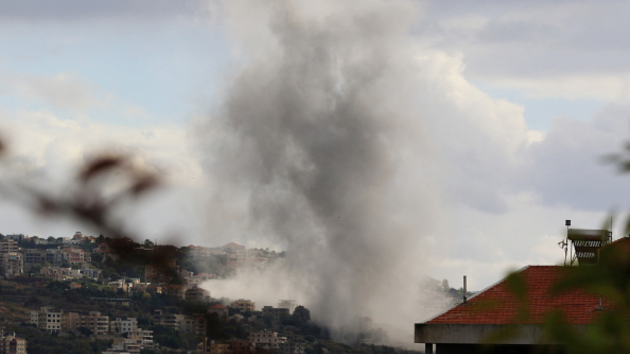Who is Yahya Sinwar, Israel’s most-wanted Hamas terrorist
Written by ABC AUDIO ALL RIGHTS RESERVED on December 22, 2023

(NEW YORK) — For Michael Koubi, Yahya Sinwar has the eyes of a murderer.
Few Israelis know the leader of Hamas in Gaza as well as Koubi, who, as an officer in Israel’s internal security organization, Shin Bet, interrogated Sinwar for more than 150 hours when he was held in Israeli prisons.
Sinwar is accused by Israel of masterminding the deadliest terror attack in Israeli history on Oct. 7 of this year when 1,200 Israelis were killed. The Israeli military has dropped leaflets in Gaza offering a reward of $400,000 for information leading to his arrest.
Koubi remembers Sinwar as being “tough,” devoid of emotions but “not a psychopath.”
“He was a different type of detainee,” says the former Shin Bet officer who interrogated Sinwar in the late 80s and early 90s.
In 1989 an Israeli court sentenced Sinwar to four life sentences for his role in killing suspected Palestinian informers and plotting to murder two Israeli soldiers.
Sinwar spent the following 22 years in prison and was one of more than 1,000 Palestinian detainees who were released in 2011 in exchange for Israeli soldier, Gilad Shalit, who had been held hostage by Hamas for five years.
At the time of his imprisonment, Sinwar was head of Hamas’ infamous internal security arm, Al-Majd and according to Israeli and Palestinian sources his job was to investigate members of Hamas who were potentially working with the Israelis.
Koubi says Sinwar boasted during his interrogations about killing suspected Palestinian informants with “a razor blade” and with “a machete.”
It is why, says Koubi, Sinwar was dubbed “the butcher of Khan Younis.”
In early December of this year the Israeli military said it had surrounded the home of Sinwar in his hometown of Khan Younis in the southern half of the Gaza Strip. They didn’t find him.
Israeli Prime Minister Benjamin Netanyahu said on Dec. 6 that it was “only a matter of time” before he was located. Israeli military leaders have described Sinwar as “a dead man walking.”
The precise whereabouts of Sinwar is still unknown. He is believed by Israeli officials and others to be hiding in Hamas’ vast network of tunnels beneath the Gaza Strip.
He has not been heard from since Oct. 7, when Hamas and affiliated groups massacred hundreds of Israeli soldiers and civilians and took around 240 people hostage.
“This offensive is the mission of his life,” says Dr. Michael Milshtein, whose job it was to study Hamas and key figures such as Sinwar when he worked in Israeli defense intelligence from 1993 until 2015.
In 2014, as chief of the Department for Palestinian Affairs, Milshtein claims he could see indications that Hamas’ leadership in Gaza was already working on something big.
At the time Yahya Sinwar was a leading figure in Hamas’ political leadership in Gaza. Three years later, in 2017, he was elected as the overall chief of Hamas in the Strip.
“When you’re trying to find the seeds of this brutality of Oct. 7 you must understand not only the ideology, but also the personality of Yahya Sinwar,” said Milshtein, who is now a senior analyst at the Dayan Center at Tel Aviv University.
According to Milshtein, Sinwar’s brutality against alleged defectors within Hamas was “spread” throughout the organization and directed against Jews and Israelis, culminating in the atrocities committed on Oct. 7.
In recent weeks it has become clear that multiple warning signs about Hamas’ plans for an attack were either missed or ignored by Israeli officials, however the attack still succeeded because the precise details about when the group would strike were kept secret.
“That’s the way Sinwar works,” said Ismat Mansour, a Palestinian writer and activist who spent 15 years inside the same detention facilities as the Hamas leader. Arrested at 16 for his part in the death of an Israeli settler in the West Bank, Mansour was released in 2013 ahead of resumed talks between Israeli and Palestinian Authority officials.
Mansour said that, when in prison, Sinwar operated, for much of the time, “in the shadows … with a small and closed group that he trusts.”
He described the Hamas leader as a “tough” and “pragmatic” man who learnt fluent Hebrew and spent much of his time studying Israeli society and security matters, including Israel’s army, which is now hunting him down.
Both Sinwar’s former fellow inmate Mansour and his former interrogator Koubi agreed that he was not just widely respected by other prisoners but also by prison staff.
“He knew how to convince people to be with him,” said former Israeli security officer Koubi, who said Sinwar’s influence over prison officials earned him “the best” conditions.
Sinwar’s ideology and long-term hatred towards Israel was what motivated him to carry out the attack on Oct. 7, according to Milshtein and Koubi.
Milshtein said he believes the Hamas leader in Gaza was driven by “jihad” and a “vision” that Israelis and Jews are “germs” and their killing could be justified on religious terms.
Mansour, a Palestinian, said there were three factors which drove Sinwar to launch the attack on Oct. 7.
The first, he said, were the visits earlier this year by Israeli hard-right nationalists to the revered Al-Aqsa Mosque compound in Jerusalem as well as raids on the mosque carried out by Israeli police.
The second, according to Mansour, was Sinwar’s rejection of Israel’s blockade on Gaza and the tight Israeli restrictions on goods and people leaving and entering the Strip.
Finally, as someone who spent much of his adult life behind bars, Sinwar had a “personal commitment,” said Mansour, to try and free as many of his close associates being held in Israeli prisons.
Despite multiple statements by Israeli officials clearly pinning the blame for Oct. 7 principally on Sinwar, some independent experts who study Hamas are not convinced he was the main architect of the attack.
Hugh Lovatt, a senior policy fellow on the Middle East at the European Council on Foreign Relations, said he believes Mohammed Deif, the leader of Hamas’ military wing in Gaza, was the overall mastermind.
“Sinwar was certainly an important figure in terms of the planning of the attacks that took place on Oct 7. However, at least in my mind, he was not the ultimate architect of those attacks,” Lovatt said.
After the scale of the atrocities committed on Oct. 7, Israeli anger “needed to be directed at someone,” argued Lovatt, noting Sinwar became a “figure of hate” because he was well-known to Israelis.
In contrast, imagery and information on Deif is so sparse that he is more of “a ghost” figure, said Jennifer Jefferis, a Georgetown University professor and author of “Hamas: Terrorism, Governance and its Future in Middle East Politics.”
Jefferis said Israel “needs a win” in its war in Gaza and the emphasis on Sinwar is part of the Israeli government’s narrative in claiming that victory.
“Israel is saying to themselves, ‘How do we say that we have beaten Hamas?’ and I think this is a way they are doing it, by painting a target on this one guy,” she said.
Every source interviewed for this article agreed that Sinwar is probably still in Gaza.
His former interrogator, Koubi, predicted that the leader of Hamas in the densely populated Gaza Strip will go down fighting if he’s located.
“He wants to die a hero of the slum, as a hero of Hamas, as a hero of the Gaza people,” Koubi said.
Both Jefferis and Lovatt said Sinwar’s death would not signal the end of Hamas in Gaza.
Hamas is “a grass roots, bottom-up organization,” said Lovatt. Hamas “has consistently shown the ability to replace leaders when they are killed or captured.”
Jeffries added, “There will be Hamas 2.0 and resistance to whatever comes next.”
Copyright © 2023, ABC Audio. All rights reserved.





